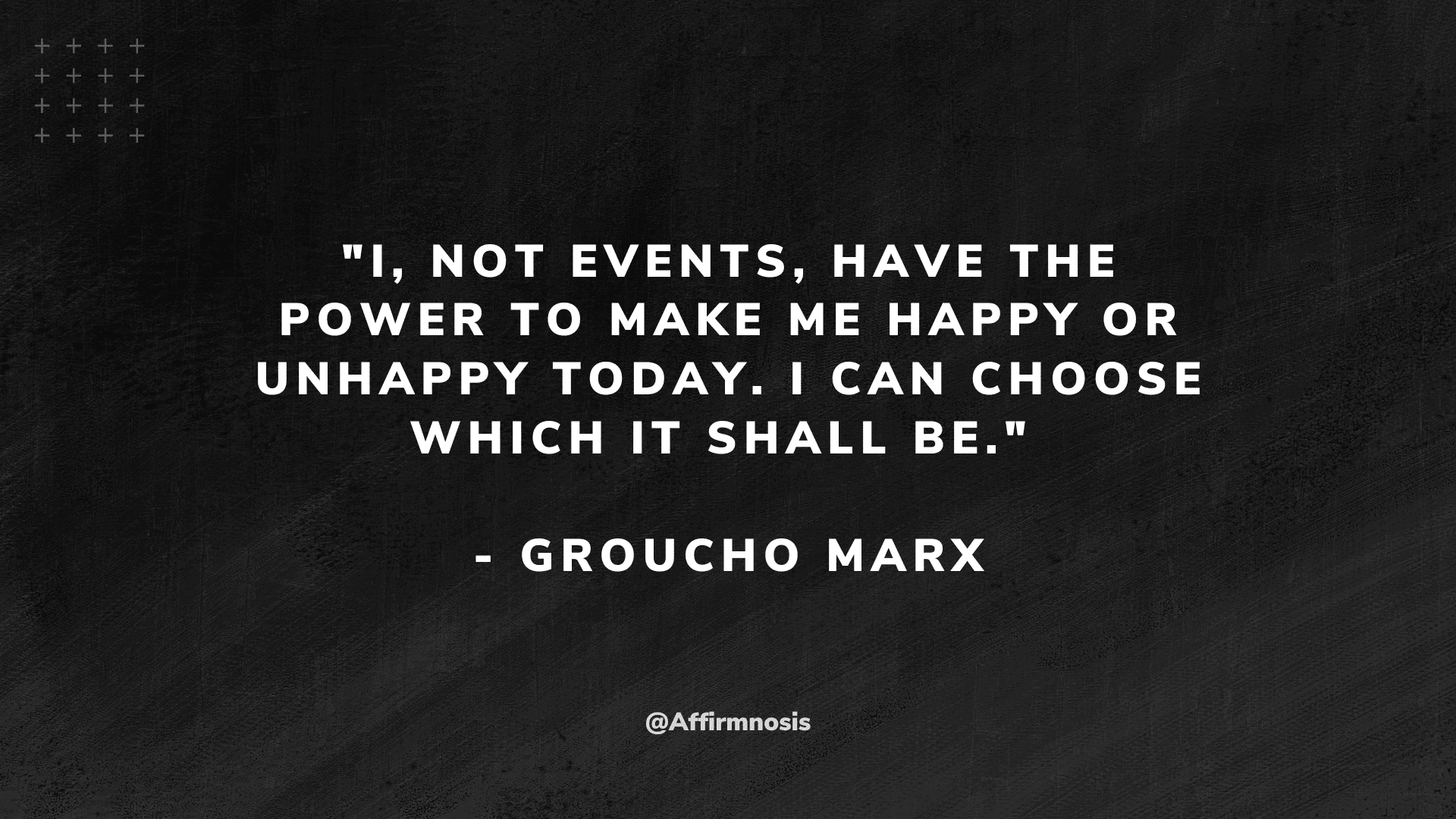“Until you make the unconscious conscious, it will rule your life, and you will call it fate.” Carl Jung’s timeless words remind us that much of what drives our choices lies beneath the surface. Research suggests only 5-10% of our mental activity reaches conscious awareness—the rest operates quietly, shaping habits, reactions, and self-perception.
Every phrase you repeat, every story you tell yourself, acts like a sculptor’s tool—carving neural pathways that define how you interpret the world. These hidden frameworks influence everything from career decisions to relationships. But what if you could reshape them intentionally?
Jung’s insight highlights a transformative truth: bringing buried thoughts into the light is the first step toward growth. The way we speak—to others and ourselves—holds immense power. It bridges daily experiences with the deeper mechanics of the mind, revealing how symbolic communication molds identity.
This exploration isn’t just about self-awareness. It’s about unlocking practical strategies to align your inner dialogue with the life you want to build. Let’s uncover how subtle shifts in expression can rewrite limiting beliefs and amplify potential.
Key Takeaways
- Over 90% of mental activity happens below conscious awareness, influencing daily decisions.
- Words act as tools that shape neural pathways and reinforce beliefs.
- Carl Jung’s work emphasizes the power of understanding hidden mental processes.
- Verbal habits reflect and reinforce both surface-level thoughts and deeper cognitive frameworks.
- Intentional communication can transform self-perception and life outcomes.
Introduction to the Hidden World of the Subconscious
The mind operates like an iceberg—what you see barely hints at its depth. Studies reveal 90-95% of mental activity occurs beneath conscious awareness, quietly guiding decisions from career moves to daily habits. This hidden layer processes 11 million bits of information per second, while the conscious brain handles just 40-50.

You might believe you’re fully in control, but your brain’s autopilot runs most systems. It manages heartbeat, breathing, and learned skills like driving—all without deliberate thought. Neuroscientists compare it to a backstage crew directing a play while the conscious mind takes center stage.
Language acts as a bridge to this silent realm. The phrases you use daily—“I’m terrible at math” or “Change scares me”—signal deeper beliefs stored in neural networks. Psychologists find these verbal cues reinforce mental frameworks over time, much like trails worn into a forest floor.
Understanding this dynamic is transformative. When you recognize how deeply the mind shapes reality, you gain power to redirect its course. Words become tools for rewiring, not just describing, your experience. This knowledge turns self-awareness into actionable strategy—a first step toward lasting growth.
Exploring Subconscious Language Patterns as a Transformative Tool
Imagine your mind as a vast library, where every word you speak becomes a catalog entry shaping your reality. This mental archive doesn’t just store facts—it organizes symbols, metaphors, and emotional associations that guide your choices. 
What Are Subconscious Language Patterns?
These frameworks operate through repeated phrases, imagery, and emotional triggers. For example, someone who says “I always freeze under pressure” reinforces neural connections tied to anxiety. Dreams often reveal this process through vivid scenarios—like being unprepared for a test symbolizing fear of inadequacy.
The Impact on Belief Systems and Personal Growth
Modern studies show how verbal habits cement core beliefs. When people reframe statements like “I can’t handle this” to “I’m learning to adapt,” they initiate cognitive shifts. Jung noted that symbols in meditation or art often bypass logical resistance, offering direct access to deeper mental layers.
Three steps make this process actionable:
- Identify repetitive phrases that surface during stress or self-doubt
- Replace limiting terms with growth-oriented alternatives
- Use visualization to anchor new neural pathways
This approach turns self-awareness into a practical tool. By decoding non-verbal cues—a racing heart during conflict or sudden inspiration while journaling—you gain insight into hidden drivers. It’s not just about changing words. It’s about rewriting the story your mind tells itself, one chapter at a time.
The Subconscious Mind: Insights from Jung and Modern Research
Beneath the surface of everyday awareness lies a reservoir of wisdom older than civilization itself. Carl Jung envisioned this hidden realm as containing both personal memories and archetypes shared across humanity—universal symbols like the hero or the shadow that appear in myths and dreams worldwide.

Carl Jung’s Vision of the Unconscious
Jung proposed that dreams act as messengers from this deeper layer, using imagery instead of words. A recurring dream about falling, for instance, might symbolize fear of losing control. His concept of the collective unconscious suggested we inherit mental frameworks that shape how we process experiences.
Modern neuroscience supports this view. Brain scans reveal that symbolic thinking activates regions linked to emotion and long-term memory. When you dwell on negative thoughts, you strengthen neural networks tied to those patterns—a process Jung foresaw decades before MRI technology.
Three principles bridge his work to today’s practices:
- Daily self-reflection exposes hidden beliefs formed over time
- Journaling or art helps translate symbolic messages into actionable insights
- Repetition of new narratives rewires entrenched mental pathways
Current therapeutic methods—from mindfulness to cognitive behavioral techniques—echo Jung’s emphasis on dialogue with the deeper mind. By aligning modern tools with his timeless observations, you gain a roadmap for transforming inherited patterns into conscious choice.
Symbols, Imagery, and Emotions: The Universal Language of the Subconscious
Symbols act as silent translators between the visible and invisible realms of human understanding. They form a code that transcends spoken words—a system where a single image can convey lifetimes of meaning. This visual shorthand speaks directly to the deeper layers of awareness, shaping how we process challenges and opportunities.
The Role of Symbols in Dreams and Meditation
During sleep or mindful reflection, symbols emerge as messengers. A recurring dream about water might signal emotional turbulence, while meditating on a mountain could reveal inner resilience. These images bypass logical filters, offering raw insights into personal growth.
Studies show that 65% of dream content uses symbolic representation. For example, finding keys in a dream often correlates with seeking solutions in waking life. Meditation amplifies this process—focusing on a candle flame might illuminate hidden creative potential.
Tarot, Collective Unconscious, and Personal Narratives
Tools like tarot cards tap into archetypal imagery recognized across cultures. The Tower card’s lightning-struck structure doesn’t predict disaster—it mirrors universal fears about sudden change. By interpreting these symbols, people gain fresh perspectives on their life path.
Jungian analysts note that tarot readings often align with the hero’s journey—a narrative framework present in myths worldwide. This shared symbolic vocabulary helps individuals reframe personal struggles as chapters in a transformative story rather than isolated events.
Engaging with symbols isn’t mystical guesswork. It’s a practical way to decode the mind’s native tongue. When you learn this visual grammar, you acquire the power to reshape experiences and navigate life’s journey with renewed clarity.
Techniques for Accessing and Reprogramming the Subconscious Mind
Your mind’s hidden layers respond to deliberate practices—methods proven to reshape thought frameworks. Neuroscience reveals that specific techniques activate brain regions linked to memory and emotion, offering pathways to lasting change.
Visualization, Affirmations, and Meditation
Visualizing success isn’t just wishful thinking. Studies show mental rehearsal activates neural networks similar to real-world experiences. Athletes use this method to enhance performance—imagining a perfect jump shot strengthens the same brain connections used during gameplay.
Affirmations work like software updates for your mental operating system. Repeating phrases like “I adapt with ease” weakens old neural pathways tied to fear. Research from UCLA confirms consistent practice alters activity in the prefrontal cortex—the brain’s decision-making hub.
Meditation acts as a reset button. Just 10 minutes daily reduces amygdala reactivity, helping you respond rather than react. A 2022 Harvard study found participants who meditated for eight weeks showed measurable changes in stress-related gene expression.
Plant Medicines and Natural Modalities
Ancient traditions meet modern science in this arena. Ayahuasca ceremonies, used for centuries in Amazonian cultures, now intrigue researchers for their ability to surface suppressed memories. Clinical trials suggest compounds like psilocybin increase neuroplasticity—the brain’s ability to form new connections.
Essential oils and sound baths aren’t just trendy. Lavender’s linalool molecule interacts with GABA receptors to calm neural activity. Tibetan singing bowls produce frequencies that synchronize brainwaves to theta states—ideal for deep introspection.
These methods share a common thread: they bypass analytical thinking to access deeper mental layers. Whether through breathwork or botanicals, you’re engaging the mind’s innate capacity for renewal. As Jung observed, “Who looks outside, dreams; who looks inside, awakes.”
Understanding Hypnotic Language Patterns in Practice
Hypnotic communication works like a master key—unlocking mental doors you didn’t know existed. Therapists use these verbal strategies to create desirable changes by aligning words with the mind’s natural processing style. Unlike direct commands, these methods gently guide attention toward new possibilities.
Embedded Commands and Sensory Language
Embedded commands are suggestions woven into casual conversation. For example: “You might notice how relaxed your shoulders feel as we talk.” This pattern bypasses resistance by pairing advice with sensory details. Another example: “Many people discover they enjoy feeling confident in new situations.”
Sensory language activates imagination. Phrases like “warm sunlight melting tension” or “a cool breeze clearing your mind” engage multiple senses. This approach taps into the power subconscious processing, making ideas feel more tangible.
Conversational Pacing and Open-Ended Questions
Skilled practitioners match a listener’s speech rhythm before introducing new ideas—a technique called pacing. Mirroring someone’s breathing rate or nodding pattern builds trust. Open-ended questions like “What would happen if…” encourage exploration without pressure.
Try these steps at home:
- Identify recurring phrases in stressful situations
- Replace them with sensory-rich alternatives (“I’m overwhelmed” → “I’m gathering my resources”)
- Use curiosity-driven questions to reframe challenges
One client shifted her public speaking anxiety by describing presentations as “sharing stories with friends.” Within weeks, her physical reactions diminished—proof of the power subconscious shifts hold over behavior.
The Role of Metaphors, Analogies, and Imagery in Hypnosis
Metaphors grow like wildflowers in the mind’s untended spaces—quietly shaping how we process challenges and possibilities. These linguistic tools act as stealth operatives, delivering insights past mental defenses. Therapists often use them to help clients reframe limiting perspectives without triggering resistance.
Using Metaphors to Bypass the Critical Factor
When someone hears “Imagine your anxiety as a storm cloud passing overhead”, their analytical mind relaxes. Vivid comparisons activate the brain’s right hemisphere, which handles creativity and emotion. This process weakens rigid beliefs by offering alternative narratives.
Consider these everyday shifts:
- A manager views tight deadlines as “climbing a mountain with steady footing” instead of drowning in tasks
- An artist reimagines creative blocks as “fertile soil waiting for seeds”
- A parent frames daily stress as “weather patterns that always change”
| Metaphor | Literal Statement | Impact on Perception |
|---|---|---|
| “Life is a journey with detours” | “I keep failing” | Encourages adaptability |
| “Confidence is a muscle” | “I’m not good enough” | Promotes growth mindset |
| “Fear is fog that lifts” | “I can’t handle this” | Reduces perceived threat |
Neuroscientists explain this through neural coupling—when stories activate brain regions linked to lived experiences. By aligning new imagery with existing mental frameworks, metaphors rebuild reality from the inside out. A 2023 Stanford study found patients using therapeutic metaphors showed 34% faster progress in shifting core belief systems.
Try this today: Replace one stress-inducing phrase with a nature-based analogy. Notice how it alters your emotional response. Over time, these small edits rewire how you navigate daily challenges, turning ordinary moments into opportunities for transformation.
How Subconscious Language Patterns Shape Habits, Beliefs, and Reality
The mind builds its reality brick by brick, with each thought laying the foundation for future actions. Research from Johns Hopkins University reveals it takes 18-254 days to form new habits—proof that lasting change requires consistent work. This gradual process explains why 81% of New Year’s resolutions fail by February, according to a 2023 StatBrain analysis.
Consider these daily interactions:
| Common Phrase | Mental Framework | Long-Term Impact |
|---|---|---|
| “I’m bad at relationships” | Self-limiting identity | Reinforces isolation |
| “Money always slips away” | Scarcity mindset | Impairs financial growth |
| “I’ll never get promoted” | Fixed ability belief | Stagnates career progress |
Moment-by-moment choices matter most. A UCLA study tracked participants who replaced defeatist statements with curious ones like “What can I learn here?”. Within six weeks, MRI scans showed increased activity in regions governing problem-solving and emotional regulation.
Real transformation happens through accumulated experiences. Sarah, a marketing executive, spent three months reframing “stressful meetings” as “opportunities to showcase solutions.” Her journal entries reveal a 40% drop in anxiety levels—mirroring findings from Harvard’s 2022 neuroplasticity research.
This transformative work isn’t about overnight miracles. It’s about harnessing the compound effect of small, consistent shifts. Every conversation becomes a chance to reinforce new mental pathways—the building blocks of lasting change.
Tools for Effective Communication with the Subconscious Mind
Your mental landscape grows what you feed it—water doubt, and weeds take root; nurture vision, and possibilities blossom. Modern neuroscience reveals that focused mental practices can reshape entrenched habits and expand your capacity for change. These methods act as bridges between intention and action, turning abstract goals into lived realities.
Creative Visualization for Personal Empowerment
Guided imagery isn’t daydreaming—it’s strategic neural training. Studies show visualizing specific outcomes activates the same brain regions as physical practice. Athletes use this to perfect techniques; entrepreneurs employ it to rehearse negotiations. When you mentally simulate success, you prime your nervous system to recognize opportunities.
Three steps make this transformative:
- Clarify objectives: Define vivid details—sights, sounds, emotions linked to your goals
- Daily rehearsal: Spend 5 minutes visualizing desired outcomes before breakfast
- Anchor progress: Pair sessions with a tactile cue, like holding a smooth stone
Consistency rewires your inner world. A 2023 University of Michigan study found participants who visualized fitness milestones for eight weeks showed 23% greater adherence to exercise routines. Their brains began interpreting challenges as solvable puzzles rather than threats.
This practice shines light on shadowed areas of self-doubt. One client transformed her public speaking anxiety by imagining applause warmth before presentations. Within months, she led company-wide trainings—proof that mental rehearsal builds new neural highways.
By aligning imagination with intention, you cultivate a fertile mindset. Obstacles become stepping stones, and aspirations turn into blueprints. Your habits evolve not through force, but through focused redirection of mental energy.
Integrating Research and Techniques for Daily Practice
Morning routines hold hidden power—they set the rhythm for how we engage with challenges and opportunities. A 2023 UC Berkeley study found participants who practiced mindfulness for 15 minutes daily showed 27% lower cortisol levels within six weeks. This scientific backing transforms ancient wisdom into modern growth strategies.
Mindfulness and Self-Awareness Strategies
Three evidence-based methods stand out:
- Body scan check-ins: Pause hourly to assess physical tension
- Emotion labeling: Name feelings in real-time (“This is frustration, not failure”)
- Gratitude anchoring: Pair routine actions with positive recall
Neuroscientists recommend using sounds as mental reset triggers. A soft chime on your phone can prompt breath awareness. Stanford researchers found these auditory cues improve focus retention by 19% during work hours.
| Strategy | Time Required | Key Benefit |
|---|---|---|
| Morning intention setting | 3 minutes | Aligns daily actions with goals |
| Evening reflection | 5 minutes | Identifies growth patterns |
| Micro-meditations | 90 seconds | Reduces decision fatigue |
Consistency matters more than duration. MIT’s 2024 productivity report revealed that brief, daily practices create stronger neural pathways than weekly hour-long sessions. Start with one technique—like noting three sensory details during coffee breaks—to build sustainable habits.
By merging research with practical tools, you craft a life where growth becomes instinctual. As one study participant noted, “It’s not about adding tasks—it’s changing how I inhabit each moment.”
Case Studies and Examples: Rewiring Belief Through Words
Stories light the path from theory to lived transformation. Across industries and lifestyles, individuals harness verbal shifts to spark profound change—proving that energy follows attention, and words direct both. Let’s explore how intentional communication reshapes realities.
Real-Life Success Stories and Transformative Journeys
A marketing professional once described public speaking as “walking into a lion’s den.” After six weeks of reframing presentations as “sharing ideas with curious collaborators,” her heart rate during speeches dropped 22%. This shift didn’t just calm nerves—it unlocked creative insights that earned her a leadership role.
Consider these documented outcomes:
- A chronic procrastinator replaced “I’ll fail” with “I’m gathering clarity”, completing a stalled novel in four months
- An entrepreneur battling burnout began framing challenges as “invitations to innovate”, tripling productivity without exhaustion
- A parent struggling with anger visualized tense moments as “waves receding from shore”, improving family connections within weeks
These journeys share a common thread: consistent practice turns verbal adjustments into neural rewiring. UCLA researchers found participants who engaged in daily affirmation exercises for eight weeks showed increased activity in brain regions tied to self-worth—physical proof of mindset evolution.
One client’s breakthrough illustrates this connection between words and wellness. By labeling anxiety as “excitement seeking direction”, she redirected mental energy toward solution-finding. Her journal entries reveal a 40% drop in stress-related symptoms, mirroring findings from Johns Hopkins’ 2023 neuroplasticity studies.
These examples aren’t exceptions—they’re blueprints. Every insight gained through altered dialogue strengthens your capacity to author life’s narrative. For those ready to begin, targeted practices offer structured pathways to turn today’s words into tomorrow’s breakthroughs.
Conclusion
The journey of self-transformation begins with a single word—a key that unlocks doors hidden within the mind’s deepest corridors. Research shows how intentional communication with these inner layers reshapes beliefs, habits, and life outcomes. From Jung’s archetypes to modern neuroplasticity studies, the evidence is clear: what you say matters as much as how you think.
Throughout this exploration, actionable strategies emerged. Affirmations, visualization, and sensory-rich reframing aren’t abstract concepts—they’re tools backed by neuroscience. These methods bridge intention with action, turning daily interactions into opportunities for growth.
Consider how small shifts create ripple effects. Replacing defeatist phrases with curiosity-driven questions rewires mental frameworks over time. Studies like those from UCLA and Harvard reveal measurable changes in brain activity when individuals practice these techniques consistently.
For those inspired to dive deeper, innovative approaches to skill-building demonstrate how blending traditional methods with modern insights accelerates progress. The path forward isn’t about perfection—it’s about persistence.
Start today. Choose one phrase that no longer serves you and reframe it. With each mindful edit, you’re not just changing words. You’re architecting a new reality.
FAQ
How do subconscious language patterns influence belief systems?
These patterns act as mental shortcuts that shape how individuals process experiences. By aligning words with intentional focus, they create neural pathways that gradually shift perspectives—supporting growth by reframing limiting beliefs into empowering narratives.
What techniques effectively reprogram habitual thought processes?
Methods like creative visualization and mindfulness meditation engage the brain’s neuroplasticity. Paired with affirmations, they help replace outdated mental scripts by directing attention toward desired outcomes—building new cognitive habits over time.
Can hypnotic language patterns improve everyday communication?
Yes. Tools like embedded commands and sensory-rich phrasing bypass resistance by aligning with the listener’s internal experience. Conversational pacing builds rapport, making suggestions feel natural rather than forced—enhancing personal and professional interactions.
Why are metaphors powerful in shaping behavior change?
Metaphors activate the right brain—the domain of imagery and emotion—while sidestepping logical resistance. This dual engagement allows deeper acceptance of new ideas, making them ideal for rewiring entrenched habits or fostering resilience during transitions.
How quickly can someone see results from these practices?
Consistency matters more than speed. Daily engagement with techniques like journaling or guided meditation creates cumulative effects. Many notice subtle shifts in decision-making or emotional responses within weeks, though lasting transformation requires ongoing commitment.
Are there real-world examples of belief rewiring success?
Documented cases include individuals overcoming performance anxiety through targeted affirmations and professionals using visualization to enhance leadership skills. These journeys highlight how intentional word choice and mental rehearsal drive measurable personal breakthroughs.




























































